
When sending out automated emails to your list, how personalized are they?
I’m not talking about things like $firstname, or order by $date for free shipping – but actual personalization based on their behavioral triggers.
Let’s dig a little bit into the numbers behind this. According to the latest Blueshift Report, trigger-based marketing emails outperform batch and blast emails by 497%. Along with that, automated emails delivered 29% of all email marketing purchases with fewer than 2% of email sends.
Recently, behavioral email marketing showed high promise of sales. Think of this as something that’s bringing the above benefits together, helping companies increase ecommerce sales by simply using behavioral triggers via email, sometimes with automation. Built off the concept of behavioral marketing, this method helps get a pulse of your audience so you can interact with them in a way that makes sense.
Let those numbers sink in a minute.
The potential for making the most of behavioral email marketing is wide open, and yet, according to Econsultancy, only 20% of marketers are using behavioral targeting.
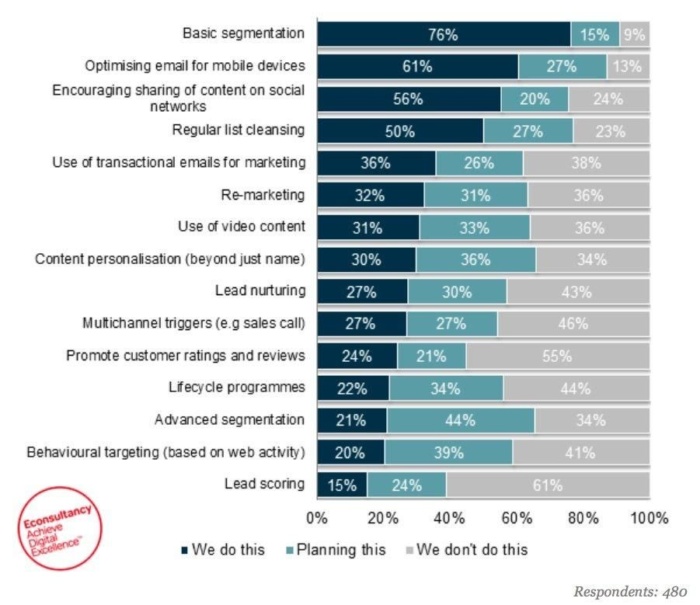
Why is that? Let’s take a closer look at the core issues and learn how to get started with behavioral email marketing.
Send Emails Based On Customer ActionsNow, not all of these points will be email “action-worthy,” so it’s up to you to figure out what actions the user takes (or doesn’t take) that are worth sending an email. You may have even seen this kind of behavioral targeting email marketing at work when you sign up for a service, but don’t complete your profile or verify your email address. If the company is smart, they’ll send you an automated email reminding you to do so.
But re-targeting the user in this way isn’t the only way to leverage behavioral targeted emails. You can also send out targeted messages, for example, when a customer:
Submits a form to download your white paper, video, case study or other free item.
Views certain content on your web page. If they spent some time browsing the FAQ, you can set up a behaviorally targeted email to check in and see if they have any specific questions.
Leaves an item in their cart without checking out. You could send them a reminder email with a small discount, remind them of limited stock (or that their cart will expire) and so on.
Remember, with behavioral email marketing, it’s the customer at the wheel — not you. They’re making choices while interacting with your content. Behavioral marketing is designed to act on those choices with the kind of engagement that increases conversion rates, grows profits, and vastly improves customer retention.
Discovering Behavioral Email Marketing Trigger OpportunitiesOnce you start collecting and analyzing the information that you gather on your customers, new opportunities for behaviorally targeted emails will percolate to the surface. You’ll start getting all kinds of great ideas on how to guide users back into your service. To help get you started, here’s an overview of email marketing formats I consider some of my favorites:
The “Getting Started” EmailAlso known as an “onboarding” email, this message is usually sent after you create an account or register for a service. It’s designed to get you clicking and interacting with the service as quickly and fluidly as possible. Here’s an awesome example from Stocksy, a stock photography site:
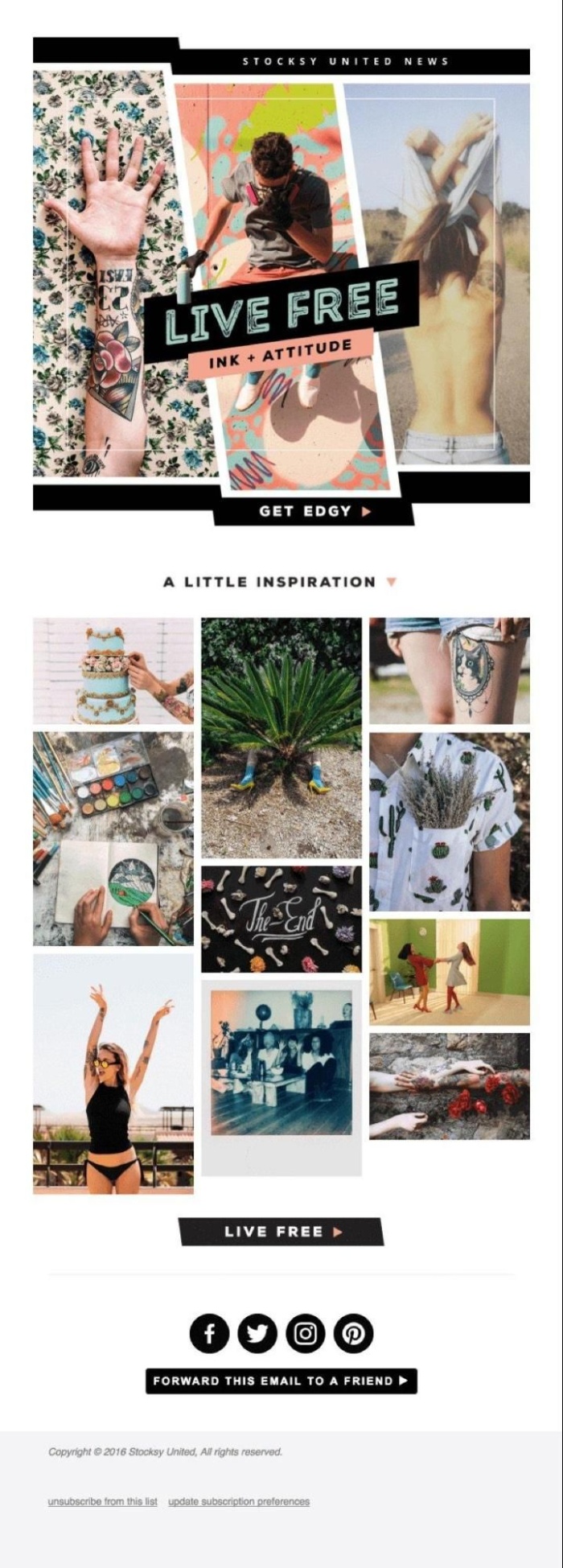
Notice how they’ve carefully curated images in emails on a specific theme – then encourage you to click through and check them out for more design inspiration. Here’s another example from Airbnb:

If you’ve been browsing trips to wine country, this targeted email can help make your tour much more palatable through the offer of discounts, local guides, special attractions, and more.
The Notification EmailThe notification email is generally just a canned response from your account or user management software that tells people their username and password, and maybe has a link to some documentation to get started. That’s where most of the getting started automating of the process ends — which results in a lot of confused or frustrated users.
Instead, encourage them to take the first step toward trying out your product by offering more of a guided, hands-on tour. If you have a SaaS, walk them through using it by helping them to create their very first _____ — such as a website, playlist, or campaign. This sort of guided, pop-up tour will help them feel more at ease, and can also give you even more valuable data for your behavioral targeting email marketing goals.
The Icing on the Cake EmailThese are the unexpected but highly welcomed emails that encourage better customer retention. Here’s a great example from Shopify that lets users extend their free trial of the service:
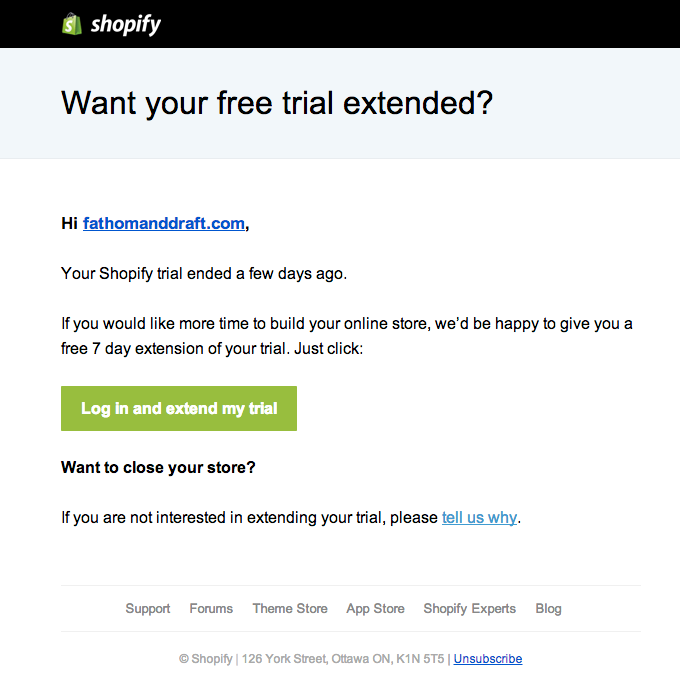
Another example comes from TurboTax, which is designed to pique the user’s curiosity about how much their tax refund could be, before they ever see a check in the mail:

It also promotes the benefits of using the TurboTax service, but without being overly “sales-y” or pushy. Rather, it shifts the focus onto the customer and their end goals – which revolve around getting the biggest refund possible at tax time.
The Reward EmailEveryone loves getting an unexpected reward — even if it’s a digital “good job!” Here’s an example of an email from Withings, which is a Fitbit-style product that helps inspire healthy habits by tracking your activity. Here, you can see a user has won a badge for taking 8,000 steps in a day, and unlocked the Marathon reward. They can also share their progress on Twitter or Facebook.
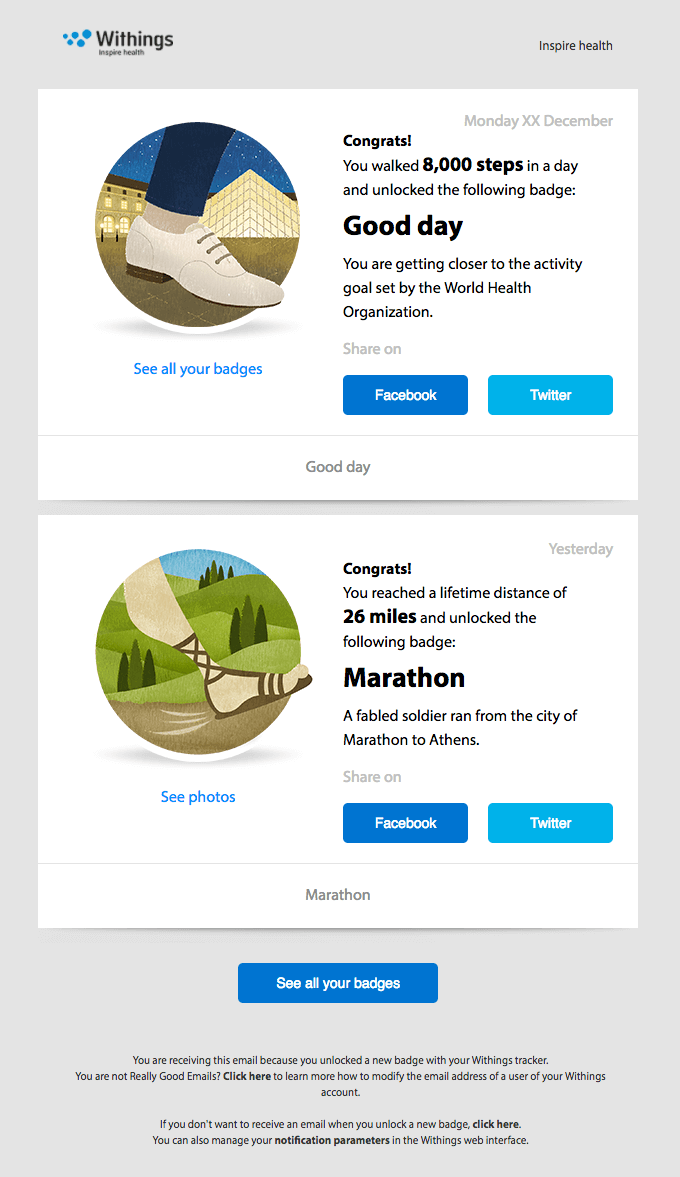 The Recommendation Email
The Recommendation EmailOftentimes, great customer service from a company is enough to get you to recommend them. But what if the brand sweetened the deal? Bombas, which sells socks online, provides free socks, with no limit, to people who tell their friends about them. Those friends get a discount on socks, and the referrer gets more socks. And we all know you can never have enough socks.
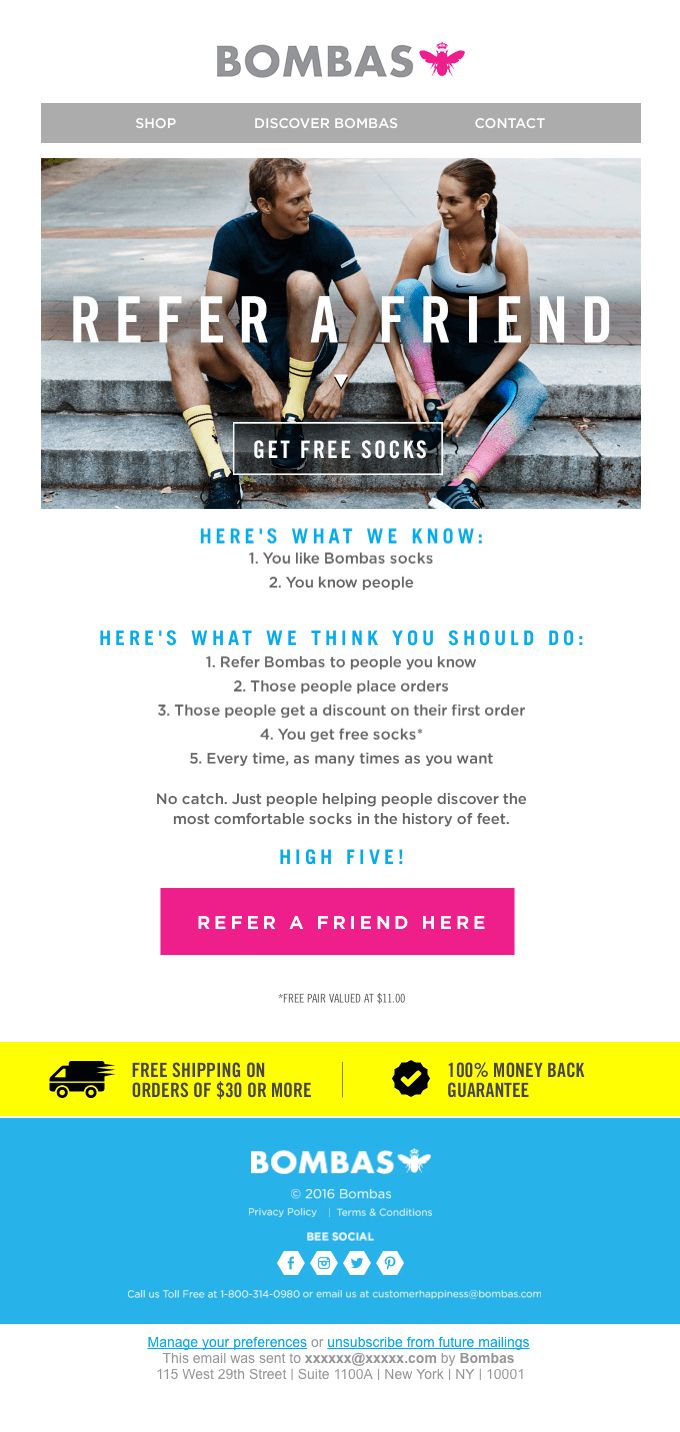 Transactional Emails
Transactional EmailsDid you know that transactional emails (receipts, shipping notifications, etc.) are opened up at 8x the rate of regular emails? With this in mind, it’s worth going through the ones your company sends and doing away with those dusty old “order confirmed” messages, to make every note you send one that not only thanks the customer for their order, but does so in a way that’s more akin to having a conversation than making a statement.
This Slack notification for the user to get involved with the app on mobile does just that by having a link to their blog in the footer:
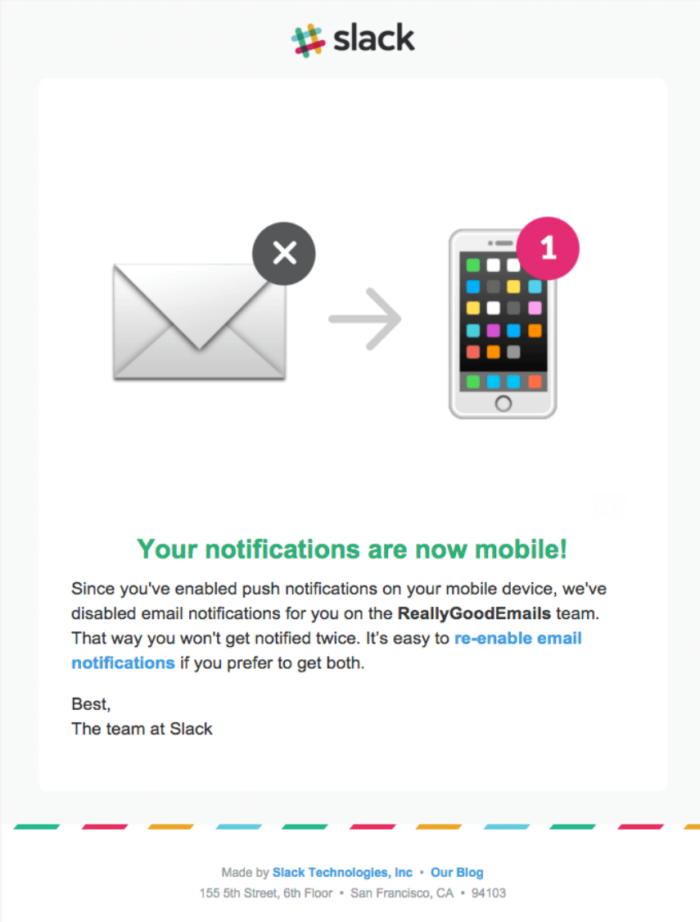
It’s not invasive, but the user knows the brand has more in store. Those are the kinds of placements in your trigger emails that will keep leads engaged.
Source: NP Digital
Original Content:
https://neilpatel.com/blog/behavioral-email-marketing/